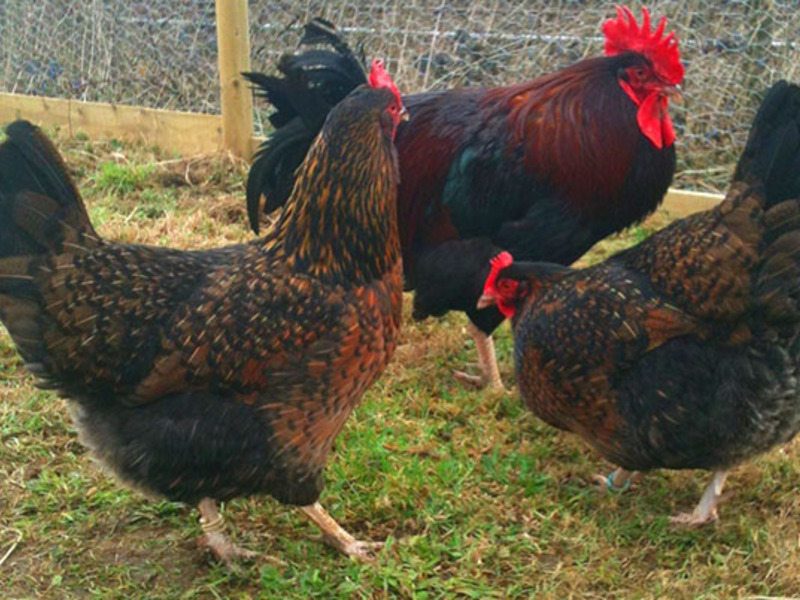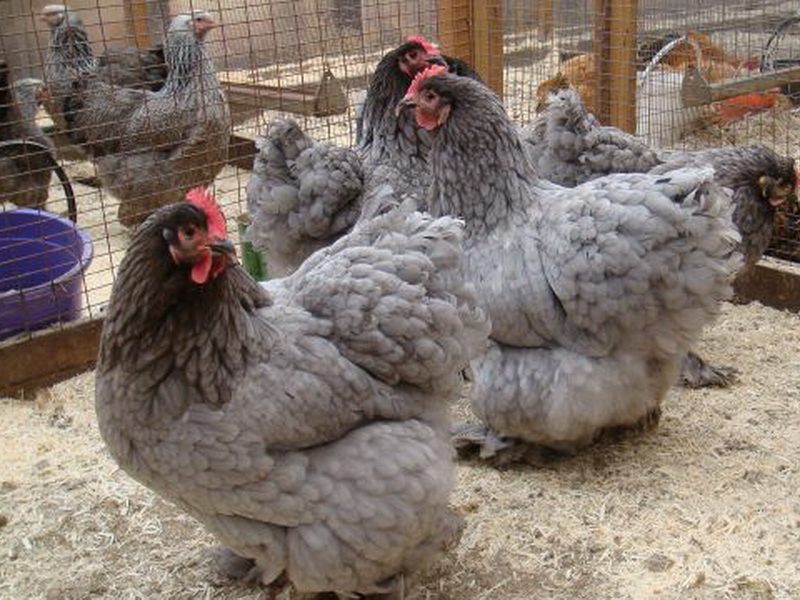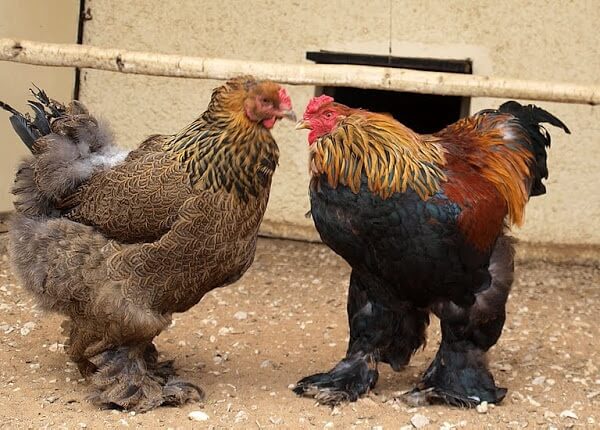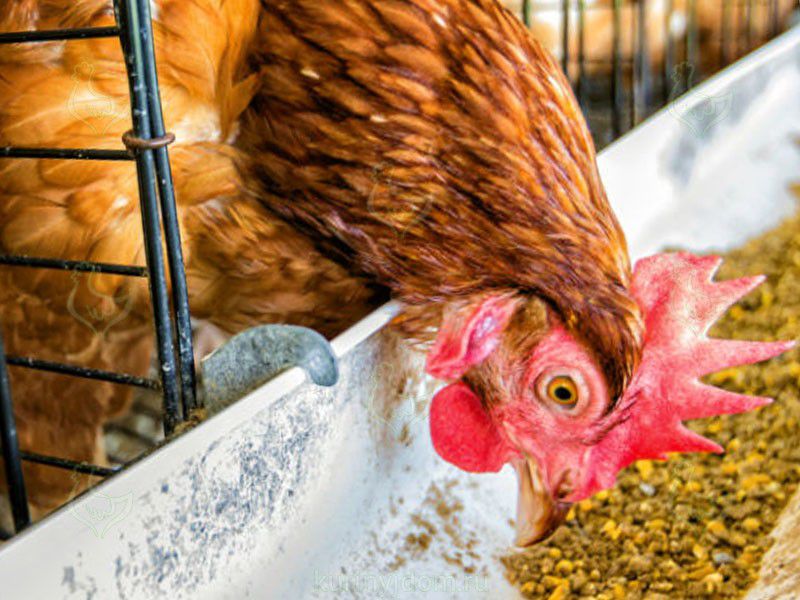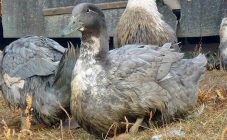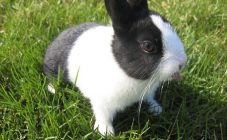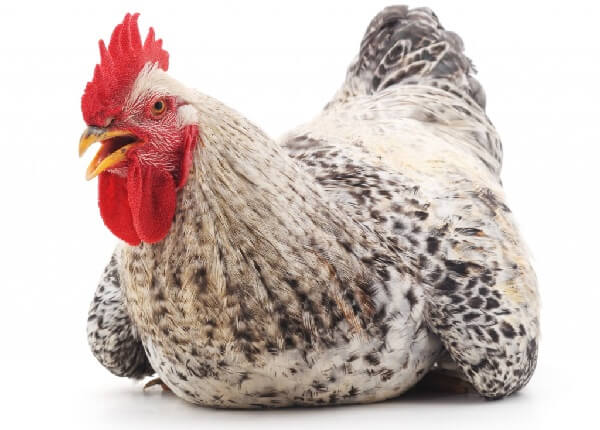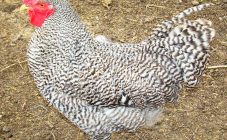Content:
In commercial and private farms, meat breeds of chickens are in demand no less than representatives of the egg category. They have their advantages and disadvantages, but the main difference is their high potential in meat production. These are varieties with a genetic propensity for rapid growth and increased body weight. Which breeds from this category are recognized as the best, how do they differ in content and other important information - further in the text.
Historical background
Purposeful breeding work on the breeding of meat chickens began more than 700 years ago. But the greatest achievements in this area date back to the 19th and 20th centuries. During this period, the famous breeds and crosses were created, which are now cultivated by large poultry farms and small farms.
Indochina is the birthplace of the first autochthonous breeds with meat productivity. Cochin, Malay fighting - Asian chickens, which served as the genetic basis for the creation of many modern hybrids. In the 19th century, European poultry enthusiasts and breeders took an active part in the development of the meat category of breeds. Thanks to their efforts, the world has received the following famous breeds.
- Faverol.
- Gudan.
- Krevker.
- Cornish.
Description and features
Chickens of the meat type of productivity are distinguished by high indicators of live weight in adulthood in comparison with egg-laying and universal, meat-and-egg birds.
The main distinguishing characteristics of meat breeds:
- rapid growth and weight gain;
- developed skeleton;
- developed muscles;
- low potential in egg production;
- high taste qualities of meat products;
- inability to fly;
- protracted puberty.
This is only a general description of meat breeds of chickens, but each has its own individual characteristics and characteristics.
TOP-5 meat breeds
Meat chickens are a large category, represented by more than two hundred breeds. Most of them have not received mass distribution and are grown only in separate, isolated areas. Leadership in the meat sector belongs to several dozen breeds. The five best meat breeds of chicken for the home and small farm are described below.
Cochinhin
Vietnamese meat and ornamental chickens with high meat potential, adapted to live in temperate climates.
Short description of the exterior:
- small head;
- red, upright crest;
- overdeveloped large earrings;
- white earlobes;
- the skin of the face is red, covered with fine bristles;
- plumage is loose, dense;
- metatarsus completely covered with feathers;
- the body is wide, trapezoidal;
- powerful thighs and legs;
- short, wide back.
Average body weight at 1.5 years:
- 4-5 kg for a rooster;
- 3.5-4 kg for chicken.
Common colors:
- blue;
- pale yellow;
- white;
- the black;
- partridge.
The hens are distinguished by a highly developed hatching instinct. At the same time, the chicken is able to warm up to 15 eggs and incubate healthy, viable offspring.
Orpington
Orpington chickens are an achievement of English breeders. There are 11 color options, but the following shades are considered common:
- pale yellow;
- white;
- the black;
- blue;
- partridge;
- black and white;
- red.
Roosters and chickens have a large, low-slung body, a developed skeleton and musculature. The plumage is loose, dense, especially in the abdomen and back. Breed Orpingtons are distinguished by a phlegmatic disposition and a low level of activity.
Brama
The North American Giant Brama is a cross between Malay chickens and Cochin Chickens. The Brama rooster weighs more than 5 kg at 1 year, and the chicken gains up to 4-4.5 kg as much as possible.
Brahma comes in the following colors:
- light;
- black and white;
- dark;
- partridge;
- fawn.
Experienced poultry farmers recommend keeping Brahma separately from other animals due to frequent outbursts of aggression and intransigence towards strangers.
Jersey giant
Giant chickens are native to New Jersey, the first to win the title of record holder in terms of live weight gain. By the second year of life, a thoroughbred rooster can weigh up to 9 kg with good care and a balanced diet.
Cornish
The Cornish Layer or Cornish is the fruit of the work of English breeders, although it was originally thought to be an autochthonous Indian breed. Cornish is distinguished from other chickens by an aggressive fighting character and a corresponding physique.
Exterior signs:
- wide, angular body;
- widely spaced, powerful paws;
- horizontal body position;
- powerful breast;
- flat back;
- Long neck;
- short, tightly fitting wings;
- small comb;
- large, rounded beak.
There are many colors, but black and white are considered the most productive when grown for meat.
Hybrids: broilers
Broiler is the general name for crosses of the meat type of productivity. Cross is a variety obtained by selection, but not capable of maintaining genetic potential when breeding. Broilers were originally created for commercial poultry production, but today they are raised in households. Representatives of Cornish, Brahma, fighting breeds are often involved in breeding. The best broiler hybrids are described below.
- Indo chickens or "holosheyki" - a hybrid born from the crossing of mutated Spanish chickens with representatives of the Cornish. There is a hypothesis that they appeared as a result of mating turkeys with fighting roosters, but science refutes the possibility of interspecific crossing. The maximum weight is 4.7-5 kg.
- COBB-500 is a classic Czech broiler, the result of crossing Cornish, Plymouthrock, New Hampshire, Rhode Island and others. On 50-55 days of life, chickens weigh up to 2.5-2.6 kg. The advantage is the delicate taste of chicken and a good presentation of the carcass.
- Master Gray is the most common Hungarian broiler, whose weight at 2 months ranges from 1.7-2.3 kg. The creator of the broiler is the world famous Hubbard company.
Feeding meat breeds
The characteristics of the diet for birds of the meat type of productivity are dictated by the needs of the species. Recommendations for the preparation of the diet below.
- The basis of the ration at the stage of intensive growth is combined feed with 20-30% protein. Homemade grain mixture with the addition of soybean meal can replace industrial feed.
- Greens and vegetables are introduced gradually and make up about 30% of the total.
- Chickens are fed up to 5 times a day for the first month, and then transferred to three meals a day.
- Supplements with protein and animal fats in the daily diet from 5 to 10%. These are cottage cheese, fish oil, meat trimmings, boiled chicken eggs in the first week of life, yogurt.
- Mineral supplements are essential for healthy skeletal development.
Home-made feeds are selected and combined according to the universal requirements for the balance of nutrients for chickens of the meat type of productivity.With the correct selection of feed, it can take no more than 3 months until ready for slaughter and receiving meat carcasses.
Content tips:
- high perches are prohibited, which often cause injuries to heavy birds;
- walking type of keeping is recommended due to the tendency to obesity in meat chickens;
- poultry farmers recommend keeping cocks and chickens separately;
- 1m² can accommodate a maximum of 3 birds.
Any egg breed is incomparable in meat potential with representatives of the considered direction. Meat chickens are used to obtain meat, and have a low egg potential, which is often mistakenly considered a disadvantage. Meat chickens consume 1.5 times more feed than other breeds, but their growth rate is 2-3 times higher, which makes them the most profitable. Which breed to choose depends on the goals and capabilities of the poultry farmer.
